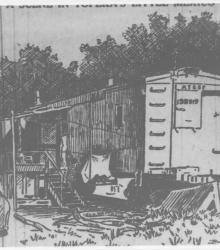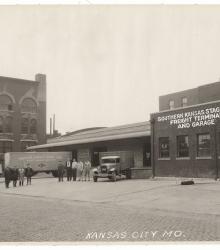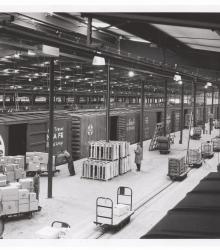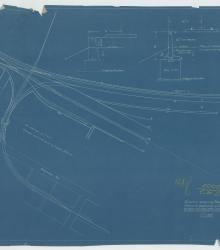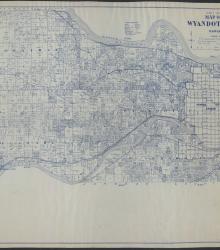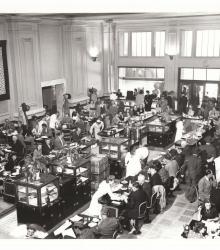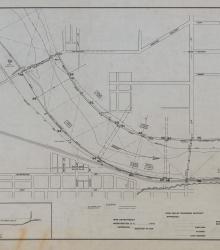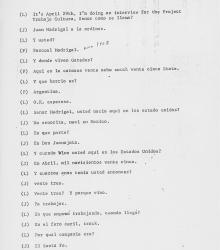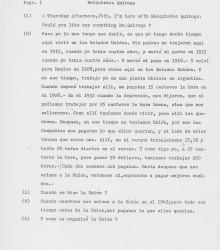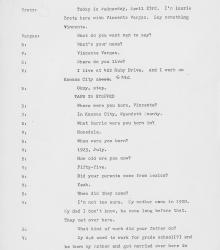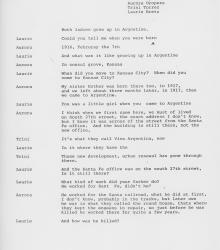Illustration of adults and children performing tasks around the exterior of an Atchison, Topeka, and Santa Fe Railroad car. Railroad companies reused cars as housing for Mexican railroad workers, many of whom were recent immigrants could not find or afford more permanent housing.
Atchison, Topeka, and Santa Fe Railroad
Exterior photograph of Southern Kansas Stage Lines freight terminal and garage in Kansas City, Missouri, with unidentified employees.
Interior view of an Santa Fe Railroad Shop. Back of photograph includes a blurb that states: "Santa Fe's modern Kansas City Freight Station has seven tracks and will accomodate 113 box cars. The rail dock is 962 feet long, and from 168 to 228 fee wide.
Map depicting locations of railroad lines in the West Bottoms area of Kansas City adjacent to the Stockyards.
This map of Wyandotte County, KS, shows the land owners on sections in townships 10-12 south, and ranges 23-25 east. It includes the towns of Quindaro, Shawnee, Kansas City, Edwardsville, and Bonner Springs. In addition, roads, railroads, electric railways, schools, churches, cemeteries, streams, and rivers are marked on the map.
Photograph of an interior view of customers and waitresses at the Atchison, Topeka & Santa Fe Railway Company's Fred Harvey House in Union Station, Kansas City, Missouri. Over 9,000 meals were served at the restaurant in a 24-hour period.
Set of 3 hand-drawn ink-on-linen maps showing the harbor lines for the Kansas River at Kansas City, Kansas, from Turkey Creek to the Argentine Wagon Bridge, showing U. S. Harbor lines, and Kaw Valley Drainage Districts modified lines. Prepared by the Chief Engineer, Drainage Board, for the Kaw Valley Drainage District.
Two-part Interview with Juan and Pascual Madrigal by Laurie Bretz as part of the Trabajo y Cultura (Work & Culture) Project documenting the Kansas City, Kansas, Hispanic community.
Interview with Adolph Oropeza by Laurie Bretz as part of the Trabajo y Cultura (Work & Culture) Project documenting the Kansas City, Kansas, Hispanic community. Oropeza describes being born in Michoacan, Mexico, and moving to Kansas City, Kansas, with his family as a 2-year-old.
Interview with Melquiades Quiroga by Laurie Bretz as part of a project documenting the Kansas City, Kansas, Hispanic community. Quiroga discusses being brought to the United States by his parents in 1915 at the age of 4, and going to work in the ice plant in Argentine in 1928.
Interview with Vincente Vargas by Laurie Bretz as part of a project documenting the Kansas City, Kansas, Hispanic community. Vargas was born in the Rosedale area of Kansas City, Kansas, in 1925.
Interview with sisters Aurora Oropeza and Trini Torrez by Laurie Bretz as part of a project to document the history of the Kansas City, Kansas, Hispanic community. The women discuss their childhoods in Kansas City, Kansas, and their brother Adolfo going to work with the railroads to support the family after the death of their father in Mexico.
